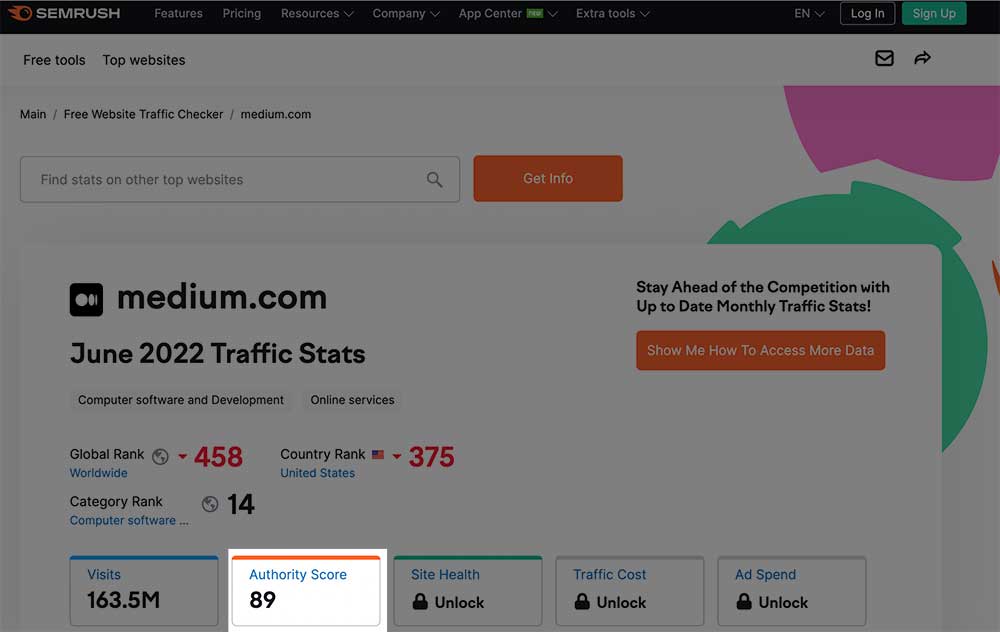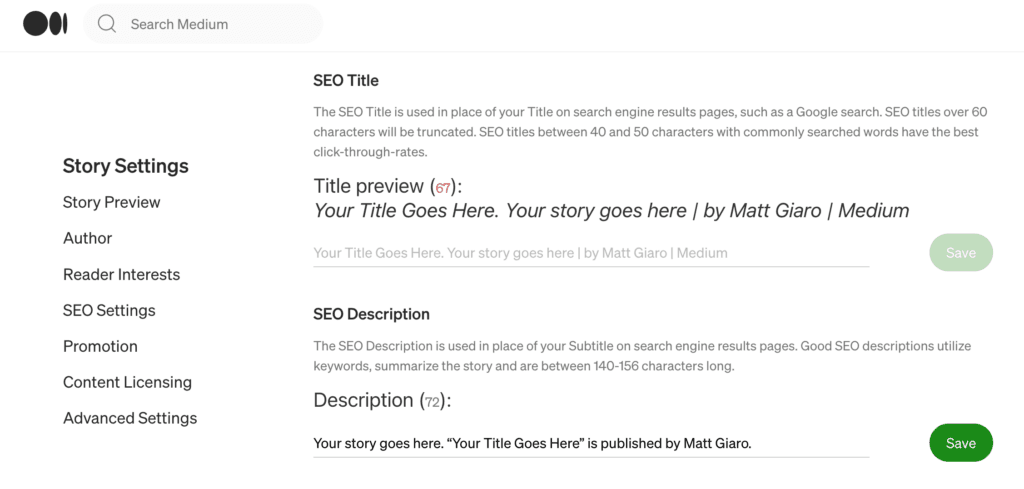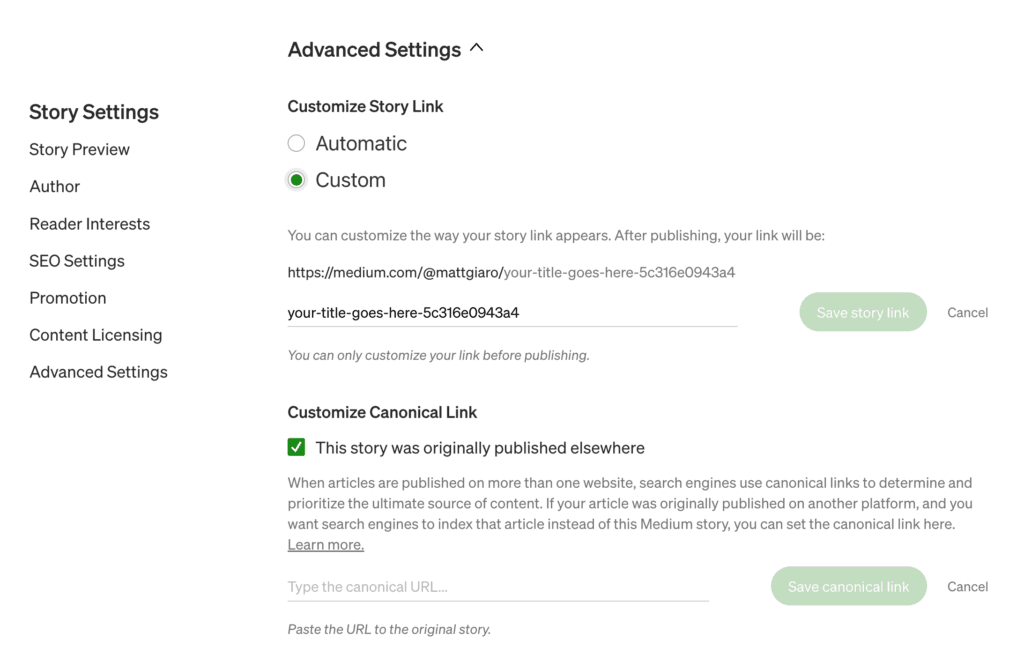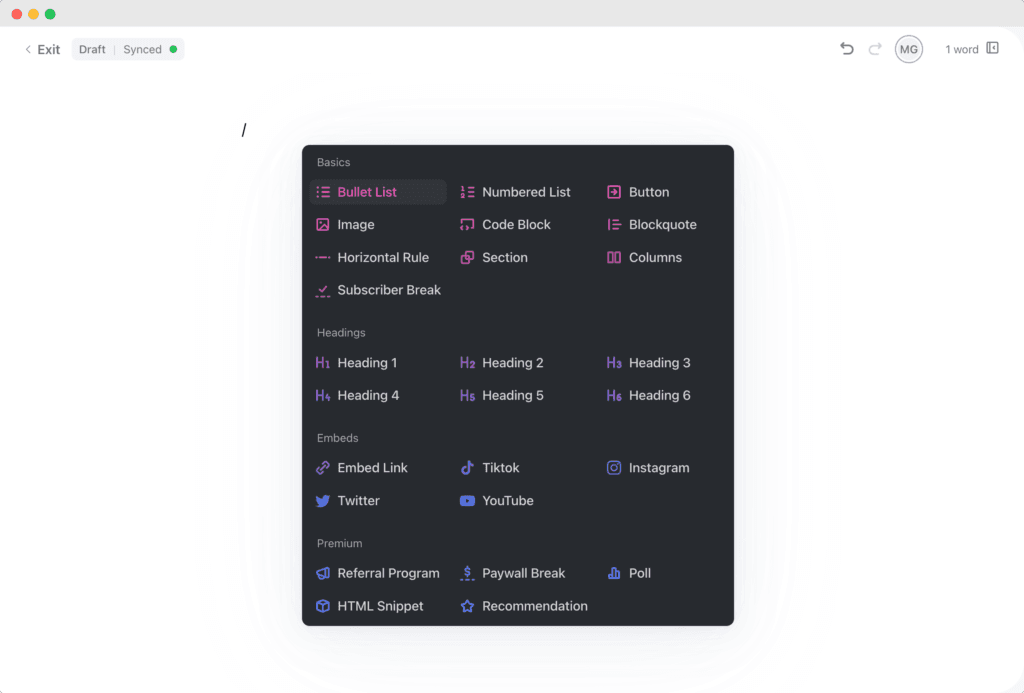Are you hesitating between Beehiiv and Medium?
This article has you covered.
As a top Medium writer myself I know the ins and outs of the platform.
I’ve also tested Beehiiv personally as my main autoresponder over the past few weeks.
So this article will give you a detailed review to help you make the right choice:
Beehiiv vs. Medium: Picking the Right Platform for Your Content
You’re considering Beehiiv. You’re thinking about Medium. Two platforms, but each is distinct in its offerings.
Let’s break it down.
Beehiiv is not just a platform for starting a blog. It also integrates an autoresponder.
With Beehiiv, you craft a great blog post, then effortlessly transition into sending out engaging email newsletters, all within the same ecosystem.
On the flip side, you have Medium.
Simplicity is its game. A home for your articles, a space where they shine. But here’s the catch: looking for an email autoresponder feature? You won’t find it here.
Beehiiv’s true competitor ain’t Medium. It’s Substack.
Discoverability: The Key to Thriving as a Content Creator
Let’s talk about discoverability.
You’re a content creator, right? Your words, ideas, stories – they’re your currency. And like any currency, they’re worthless if not circulating.
You need eyeballs. You need readers. Discoverability isn’t just important – it’s lifeblood.
Here’s where Medium and Beehiiv diverge. Medium? It’s like a bustling city square. They provide a feed for their users, pushing your content into the crowd. If you write it, they will come.
Beehiiv? It’s more like a private gallery.
No feed. No spontaneous crowd. You invite your audience. You control the guest list.
Two platforms. Two very different approaches to discoverability. The question is, which fits your style best? Let’s explore further.
SEO: The Battle of Domains and Ranking
SEO is the holy grail to if you want free traffic.
This is the battlefield where Medium shines.
Medium’s domain is well-known by Google. It trusts and loves it.
That’s why you see so often Medium articles hitting page 1 of Google search.
According the SEMRUSH, Medium’s Authority Score is 89 (the closer to 100, the better.)

Your Beehiiv subdomain or custom domain won’t have that score baked in.
They don’t get the instant golden ticket to the front page. Even more so when you bring your custom domain into play (more on this later).
Medium’s in the spotlight when it comes to SEO. Beehiiv, not so much.
Recommendations: Beehiiv’s Secret Sauce
Let’s pivot for a moment.
Despite Medium’s SEO prowess, Beehiiv packs its own punch. A game-changer in its arsenal?
Recommendation features.
Think of Beehiiv like a tight-knit community. Imagine a neighborhood where newsletters shout out to each other, spreading the word about your work. They’re called boosts and recommendations.
You write. Someone else recommends it. Suddenly, your content, your ideas, and your stories are shared beyond your own circle. It’s like having your personal street team.
I’ve got a detailed breakdown of these recommendation features in my complete Beehiiv review.
But this requires you to make connections or pay for ads. So the safest bet to get started and growing remains Medium.
Making Money On Medium vs. Beehiiv
Let’s talk about the green stuff.
The moolah.
How do Medium and Beehiiv stack up when it comes to monetizing your content?
Beehiiv plays it a bit like Substack.
Got valuable content? Put it behind a paywall.
Let your subscribers pay a monthly fee to feast on your articles. Your content, your rules, your profits. Beehiiv takes no cutt from your member’s subscription fee. Yep, you read that right.
Now, Medium takes a different path.
If you choose to put your story behind a paywall, you might get paid. But it’s a communal one.
Here’s how it works: every user pays $5 per month for access to all the stories. The unlimited buffet. And you? You get a slice of that membership pie.
Beehiiv offers a direct subscription model. Medium’s focused on performance: if your article gets reads, you get paid.
Domain options
Domains: Your Online Address
Moving onto domains. Think of them as your online address. They tell the world where to find you. And here, Beehiiv and Medium offer different neighborhoods.
Beehiiv invites you to bring your brand to the table. Want a branded domain for your blog? Beehiiv says: “Sure, come on in.” So it’s not just yourusername.beehiiv.com. It’s your blog, your brand, your domain.
Medium, though? It’s more like a shared apartment building. Your URL reads yourusername.medium.com. You’ve got your own place, but you’re still living in the Medium complex.
So, branded domain or shared space? Beehiiv or Medium? Let’s dig deeper to help you make your choice.
SEO options for your articles
Title, Metadata, and Descriptions
Both Medium and Beehiiv allow you to personalize title, metadata, and descriptions of your articles.
This is a huge plus to appear correctly in the Search engines.
Here’s how it looks like on Medium:

And here on Beehiiv:

Canonical URLs
Let’s talk about canonical URLs. I know, I know, big fancy term, right? And it’s HUGE for SEO.
Imagine you have a favorite shirt. You wear it, click a bunch of selfies, and those pictures are all over the internet.
But there’s always that ONE picture that captures the shirt’s color just right, the fit just perfect. That’s your favorite. You want everyone to see THAT picture. That’s what a canonical URL is – your chosen picture for Google to show.
So, canonical URLs tell Google: “Hey, of all the places this content appears, THIS is the place I want you to focus on.” It’s your SEO showpiece.
Medium gets it. They let you add a canonical URL. That way, you can guide Google to your preferred version of the content.

Beehiiv? Not on board. They don’t allow for canonical URLs.
So, there’s another factor for you.
Canonical URLs: Medium says yes, Beehiiv says no.
Slugs: Small Details, Big SEO Impact
Let’s dive into another SEO secret weapon: slugs. Not the slimy kind, but the kind that lives in your URL.
A slug is the part of your URL that comes after the domain. It’s like the subtitle of your online address. Why is it important? Well, it gives a clear idea about your content. It tells your reader, and more importantly, Google, what your article is about. It’s an SEO booster, a signpost pointing towards your content.
Good news! Both Medium and Beehiiv give you the power to customize your slugs. Your article? You decide its online address. You take the wheel on SEO.
Two platforms, same stance on slugs. Your SEO game can stay strong, whichever you choose. But there’s more to consider.
Pricing: Free vs. Fee
Let’s talk about cost. Medium? Absolutely free. You write, they host, no charge.
Beehiiv? It also lets you blog for free. Forever. No ticking time bomb, no trial period.
But here’s the twist. On Medium you can’t use your own personal domain.
Want a fancy a custom domain on Beehiiv? Open your wallet. Their $49 plan lets you link your branded domain.
Oh, and don’t forget, Beehiiv has another trick up its sleeve. It lets you send out newsletters. So, if you’re thinking about cost, think about value too.
Medium is a free platform for your writing. Beehiiv, a potential home for your blog and newsletters, but with a price. Let’s weigh these facts as we continue our exploration.
Integrations: Connecting the Dots
Let’s move on to integrations, those magical bridges connecting different platforms.
Medium? Pretty self-contained. You write, you publish. Easy-peasy. But wait, they do offer a Zapier integration. If you’re all about streamlining your publishing workflow, that’s a nice little bonus.
The interface is slick, straightforward. You’re not wasting time clicking through menus.
Now, Beehiiv is a different beast. Because of the autoresponder feature, you’re going to NEED those integrations.
The problem, is that those integrations aren’t enough if you’re using 3rd party tools. I talk about that in details in my full Beehiiv review.
There are more integrations with Beehiiv than Medium, but that’s because Beehiiv is also an autoresponder where integrations are VITAL.
Editor
Onward to the editor, your virtual canvas, the stage for your words.
Medium and Beehiiv? Both offer pretty and efficient editors. But they differ in style and functionality.
Beehiiv’s editor leans into the Notion vibe.
Simply type a forward slash and voila, a menu pops up. You get a smorgasbord of embedding options. Images, videos, links, you name it. And markdown enthusiasts? Beehiiv’s got your back. Markdown works like a charm in the editor.

Medium, on the other hand, keeps things simple. It’s a classic text editor. No frills. But if you’re hoping to use markdown, here’s the kicker: it doesn’t work. You need to learn and use Medium’s specific shortcuts to style your headers and format your text.

Bottom line: Both platforms have a nice and clean editor.
The Final Word: Beehiiv vs Medium
When to choose Medium over Beehiiv
- You have no audience and want to tap into Medium’s pool of 60 million active users
- You already have a website
- You want to leverage your articles and get immediate SEO traffic
- You’re okay about not having a blog integrated to your autoresponder
When to choose Beehiiv over Medium
- You want an all-in-one platform for blogging and email marketing
- You already have a community that you can bring on
- You want to start a paid newsletter
